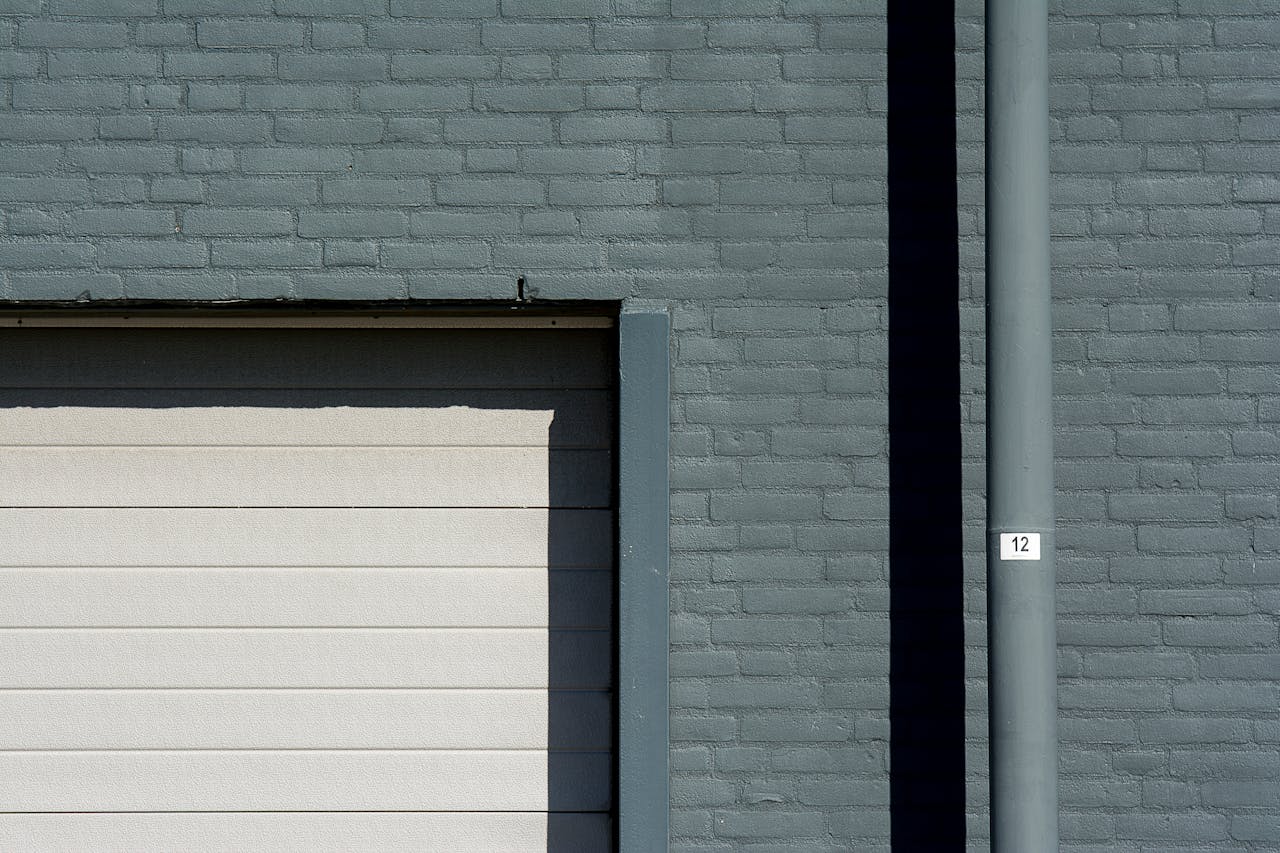Thinking about enhancing your garage's functionality and energy efficiency? A well-insulated garage door can significantly improve comfort, reduce energy costs, and add value to your home. This comprehensive guide will walk you through everything you need to know about garage door insulation, from choosing the right materials to tackling the installation process.
What is Garage Door Insulation?
Garage door insulation involves adding a layer of insulating material to your garage door to minimize heat transfer and improve energy efficiency. This helps prevent cold air from entering during winter and hot air from escaping during summer. By reducing drafts and heat loss, insulation creates a more comfortable and energy-efficient garage space, impacting the overall comfort of your home. Common insulation materials include foam boards, fiberglass batts, and spray foam, each offering unique properties and installation methods. Selecting the appropriate material depends on factors like your budget, climate, and DIY skills. The thermal resistance, or R-value, of the chosen insulation plays a crucial role in its effectiveness.

Why Insulate Your Garage Door?
Insulating your garage door offers several significant advantages. Firstly, it dramatically reduces energy costs by minimizing heat loss in winter and heat gain in summer. This translates directly to lower heating and cooling bills year-round. Secondly, a well-insulated garage improves the comfort of adjacent living spaces, preventing temperature fluctuations that can impact your home's overall climate control. Improved soundproofing is another benefit, reducing noise intrusion from outside. Finally, insulation enhances the durability and longevity of your garage door, protecting it from the elements and extending its lifespan. These combined benefits make garage door insulation a worthwhile investment for homeowners.
Types of Garage Door Insulation
Several types of insulation are suitable for garage doors, each with its own set of pros and cons. Foam insulation, particularly polyurethane and polystyrene, is lightweight, easy to install, and provides excellent thermal resistance. Fiberglass insulation, while effective, requires careful installation to avoid gaps and maintain its thermal performance. Rigid foam insulation boards, such as XPS or polyiso, offer superior R-values and are ideal for thicker garage doors. Lastly, spray foam insulation excels at sealing gaps and cracks, creating an air-tight barrier, but often requires professional installation. The best choice depends on your specific needs and budget.
How to Choose the Right Insulation Material?
Selecting the right insulation material involves considering several key factors. The most crucial factor is the R-value, a measure of thermal resistance. Higher R-values indicate better insulation performance. Your climate plays a significant role in determining the required R-value; colder climates necessitate higher R-values. The thickness of the insulation material also affects its R-value; thicker insulation generally provides higher R-values. Furthermore, consider the ease of installation; some materials are easier to work with than others. Finally, your budget will also influence your choice, as different insulation materials vary significantly in cost.
DIY vs. Professional Installation: Which is Better?
Whether to insulate your garage door yourself or hire a professional depends on your skills, time constraints, and budget. DIY insulation is a cost-effective option if you're comfortable with home improvement projects and have the necessary tools. However, professional installation ensures a flawless result with minimal gaps or mistakes. Professionals possess the expertise and equipment for efficient and effective insulation, especially with more complex methods like spray foam application. A table comparing both options, detailing the pros and cons of each approach in terms of cost, time investment, and quality of work, would prove helpful for decision-making.
Steps to Insulate Your Garage Door
Insulating your garage door is a straightforward process if approached systematically. First, accurately measure your garage door to determine the required amount of insulation material. Next, select your preferred insulation material based on the factors discussed above. Thorough preparation is key; clean the garage door surface and address any existing cracks or gaps before installation. Carefully install the chosen insulation, ensuring a snug fit and minimizing any air gaps. Finally, seal all edges and joints with appropriate weather stripping to create an airtight seal, preventing drafts and maximizing insulation effectiveness. Following these steps will ensure a successful and efficient insulation project.

Common Mistakes to Avoid When Insulating
Several common mistakes can compromise the effectiveness of garage door insulation. One frequent error is inaccurate measurements, leading to insufficient or excessive material. Ignoring gaps and cracks allows air infiltration, negating the benefits of insulation. Using inadequate materials with low R-values reduces the overall insulation performance. Failing to properly seal edges and joints creates pathways for air leakage. Avoid these pitfalls by meticulous planning, accurate measurements, and careful installation techniques. Addressing these potential issues proactively ensures a high-quality, effective insulation job.
How Much Does Garage Door Insulation Cost?
The cost of garage door insulation varies depending on several factors, including the size of your garage door, the chosen insulation material, and whether you opt for DIY or professional installation. Materials range from inexpensive foam board insulation to more expensive spray foam applications. Professional installation adds to the overall cost, but it often ensures superior results. However, the long-term savings on energy bills often outweigh the upfront investment. Calculating potential energy savings based on your current energy consumption can help justify the expense and demonstrate a significant return on investment over time.
Ways to Winterize Your Garage Beyond Insulation
Beyond insulation, several other measures contribute to a winterized garage. Sealing air leaks around windows, doors, and other openings prevents cold air intrusion. Adding weather stripping to the garage door frame enhances the seal created by the insulation. Consider a garage door sweep to block drafts at the bottom of the door. These supplementary measures, when combined with insulation, maximize the garage's energy efficiency during colder months, creating a warmer and more comfortable space. These simple steps provide a significant impact and add to the overall efficiency of your winterized garage.
Long-Term Maintenance Tips for Insulated Garage Doors
Maintaining your insulated garage door is crucial for preserving its energy efficiency and longevity. Regularly inspect the insulation for any signs of damage or deterioration, especially near edges and joints. Address any gaps or cracks promptly to prevent air leakage. Clean the door surface regularly to remove dirt and debris that can accumulate and affect insulation performance. By adhering to these maintenance tips, you can ensure that your garage door retains its insulating properties for years to come, providing a consistent return on your initial investment.
Energy Audits and Their Role in Identifying Insulation Needs
An energy audit can pinpoint areas of your home that lose energy and guide insulation improvements. Professionals analyze your home’s energy consumption and identify energy loss points, including your garage door. They can precisely determine the necessary R-value for your garage door based on your climate and energy use. This analysis helps you make informed decisions regarding insulation type, thickness, and installation methods, ensuring an http://damientlzz081.bearsfanteamshop.com/secure-your-home-amp-budget-garage-door-repair-installation-amp-financing-in-2025 effective and cost-efficient insulation strategy. The insights gained from an energy audit significantly improve the success and effectiveness of your garage door insulation project.
FAQ Section
How effective is garage door insulation? Garage door insulation can significantly reduce energy loss, potentially saving you 15-25% on your energy bills.
Can I insulate my garage door myself? Yes, many homeowners successfully insulate their garage doors themselves, although professional installation may offer superior results.
What materials are best for insulation? The best material depends on your needs and budget; foam panels, fiberglass, and spray foam are common choices.
How do I maintain my insulated garage door? Regular inspection for damage, sealing any gaps, and occasional cleaning will help maintain the door’s efficiency.
Is insulated garage door worth the investment? The long-term energy savings and increased comfort often justify the initial cost of insulation.
Investing in garage door insulation is a smart decision for homeowners seeking improved energy efficiency, enhanced comfort, and increased property value. By carefully considering the various insulation options and following the steps outlined above, you can effectively transform your garage into a more functional and energy-efficient space. Don't delay—start planning your garage door insulation project today!
